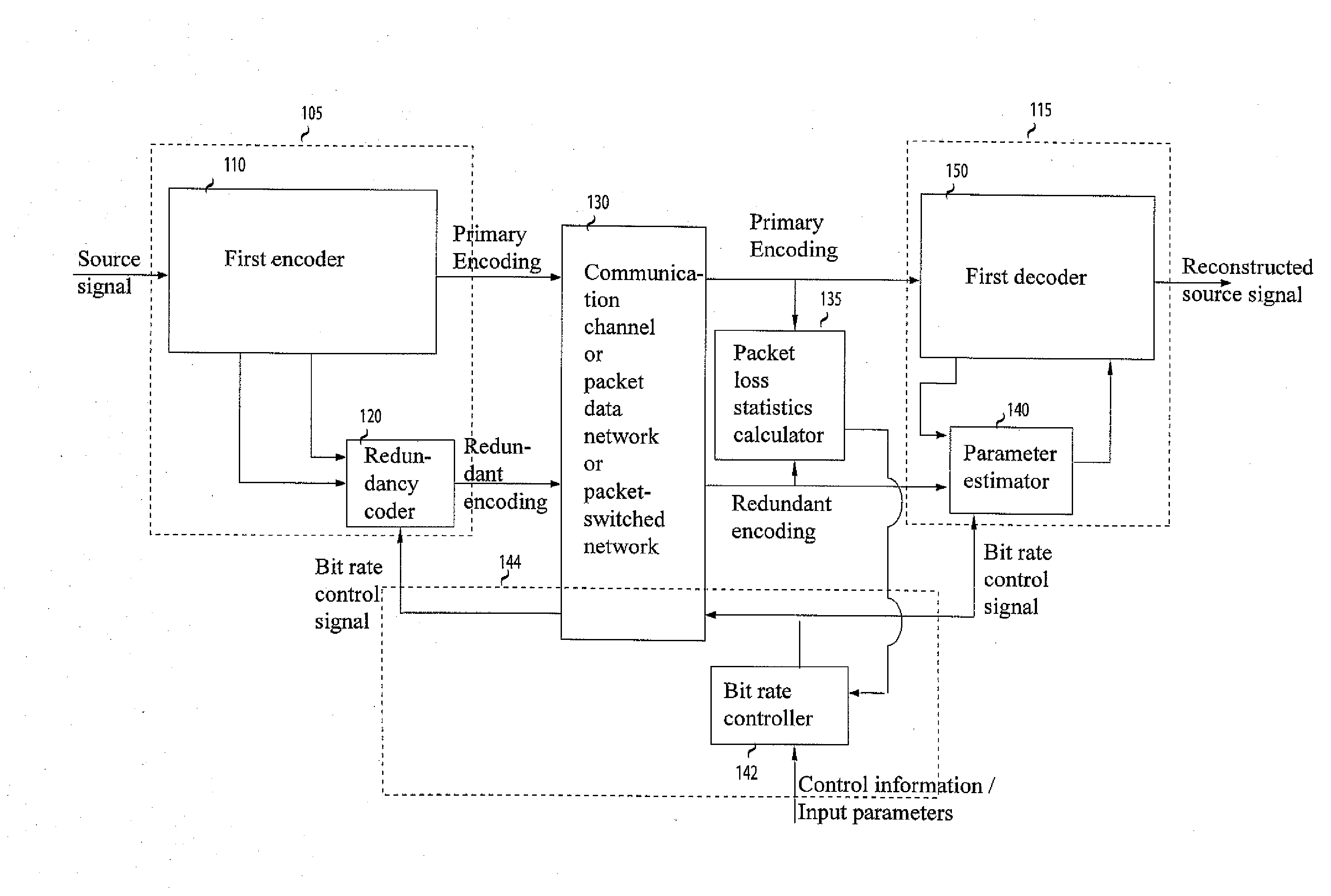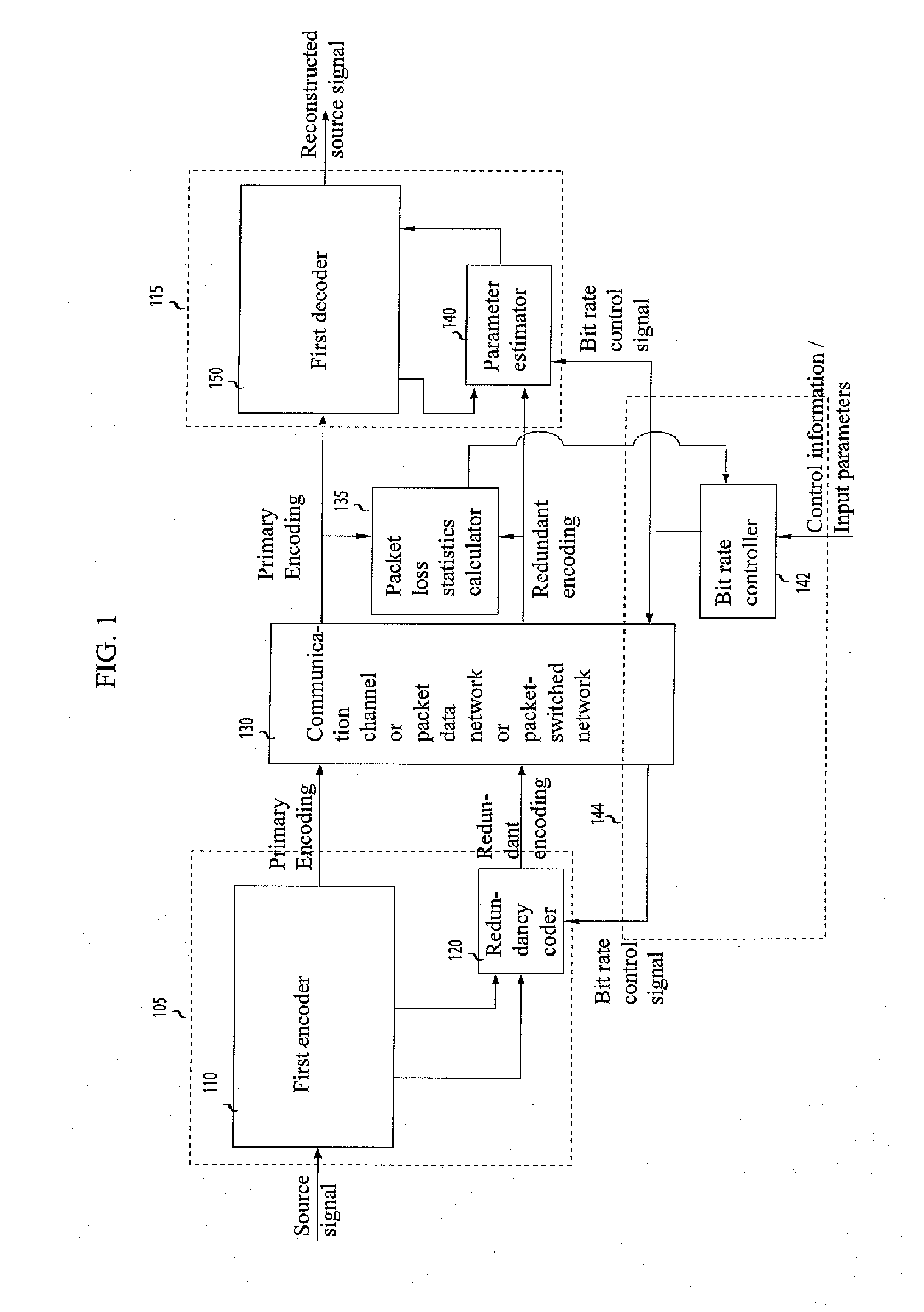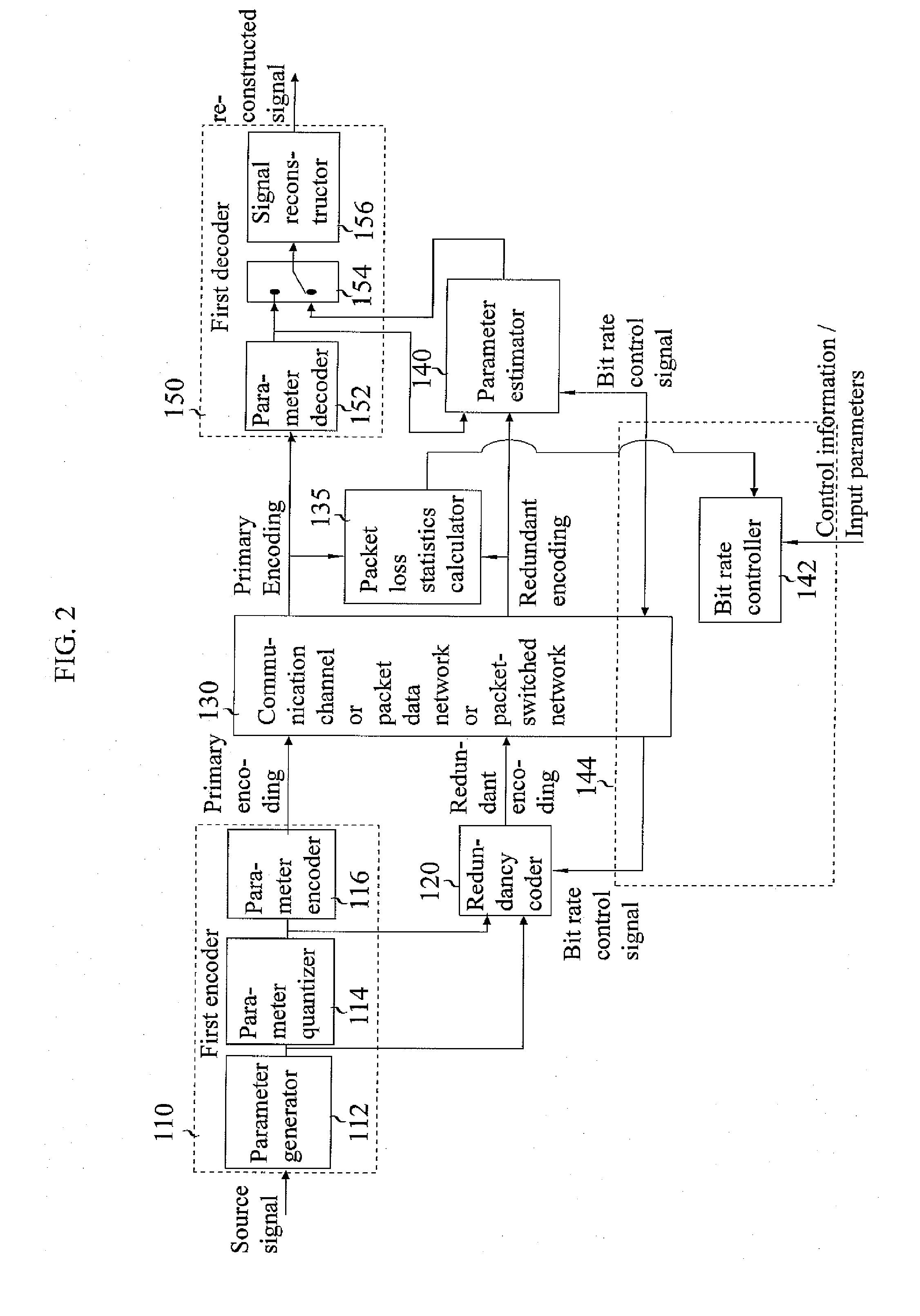Adaptive, scalable packet loss recovery
a packet loss and packet loss technology, applied in the field of adaptive and scalable packet loss recovery, can solve the problems of loss of data packets representing signals to be transmitted over packet data networks, inability to easily add to existing systems, and loss of existing systems, so as to facilitate signal reconstruction, prevent network congestion, and high performance of inventive systems
- Summary
- Abstract
- Description
- Claims
- Application Information
AI Technical Summary
Benefits of technology
Problems solved by technology
Method used
Image
Examples
Embodiment Construction
[0025]FIG. 1 shows a system from transmitting a source signal across a packet data network 130 according to an embodiment of the present invention. A source signal encoder or first coder 110 encodes a source signal and generates a primary encoding on a block-by-block basis, where a block typically is one or more time segments of the source signal. The blocks are usually but not necessarily of the same length. The source signal is generally encoded in the form of a sequence of data packets, each packet including a packet header. It is common but not necessary that the data packets are synchronous with the blocks corresponding to a particular time segment of the signal source, or a fraction thereof, or a set of segments.
[0026]In an embodiment, the primary encoding is assumed to be lossy, i.e., the reconstructed source signal generated by a corresponding source signal decoder or first decoder 150 in response to the received primary encoding is an approximation of the source signal. In ...
PUM
 Login to View More
Login to View More Abstract
Description
Claims
Application Information
 Login to View More
Login to View More - R&D
- Intellectual Property
- Life Sciences
- Materials
- Tech Scout
- Unparalleled Data Quality
- Higher Quality Content
- 60% Fewer Hallucinations
Browse by: Latest US Patents, China's latest patents, Technical Efficacy Thesaurus, Application Domain, Technology Topic, Popular Technical Reports.
© 2025 PatSnap. All rights reserved.Legal|Privacy policy|Modern Slavery Act Transparency Statement|Sitemap|About US| Contact US: help@patsnap.com



